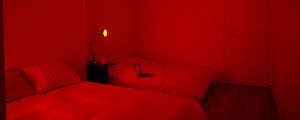Honouring Belgium this year, the annual Festival Paris Cinéma presented the identity of Belgian cinema, from birth to the present, across films and decades, with Ernst Moerman’s Monsieur Fantômas (1937) being a clear standout. Shown during a cinema concert tribute of silent film from the region at the Wallonie-Buxelles Center, it presented a surrealist approach to the crime thriller, while not only standing the test of time but making one wonder if the cinematic medium has moved forward or just in circles.
A social satire and an experiment in the cinematic formula, Monsieur Fantômas is based on the seminal character created by French writers Marcel Allain and Pierre Souvestre. Repeatedly reinvented across film and graphic novels over the last century, the prototype serial killer was highly regarded by the earlier 20th century surrealists. With live music accompaniment, including flute and a guitar, the musicians played the soundtrack for the silent movie, enhancing the experience and accentuating the surrealistic vision of its director, while introducing its audience to a daring satire of church, the judicial system and commentary on gender relations, through Fantômas’ kitsch.
What is most impressive about the Belgian auteur’s work is that he manages to create a film that has stood the test of time on every level, both visually and thematically. Moerman integrates his admiration and love of surrealistic art into film by creating scenes that honour the avant-garde movement: a dune on a beach becomes a home by putting a door in the middle of nowhere, its decor on the other side, with no walls and lines in the sand defining a room. It’s scenes like that, with its home movie style of shooting, that makes Moerman’s exploitation of the medium so remarkable. In a postmodern context, silent film does not always betray its age and this piece exemplifies that perfectly because, in not knowing the year of the production, an audience could easily mistake Monsieur Fantômas for a modern tribute to silent film, with contemporary sensibilities.
More than that, Monsieur Fantômas surpasses much contemporary film in imagination and originality. An argument can be made for the technological advances and the introduction of various non-linear narrative formulas in recent years but imagination and artistry is also integral to making those advances work. As a way to evolve the idea of narrative, of successfully mixing art forms across fine arts, cinema and poetry, Monsieur Fantômas comes across as one of the first examples of successful experimentation in interdisciplinarity. Perhaps the proof of its success is in the added integration of live music, making Moerman’s biggest accomplishment the fact that a piece created 80 years earlier could still pass for a contemporary work, while building on a dialogue between art forms in a most innovative way. **
Festival Paris Cinema is an annual festival running June 28 to July 9, 2013.






















